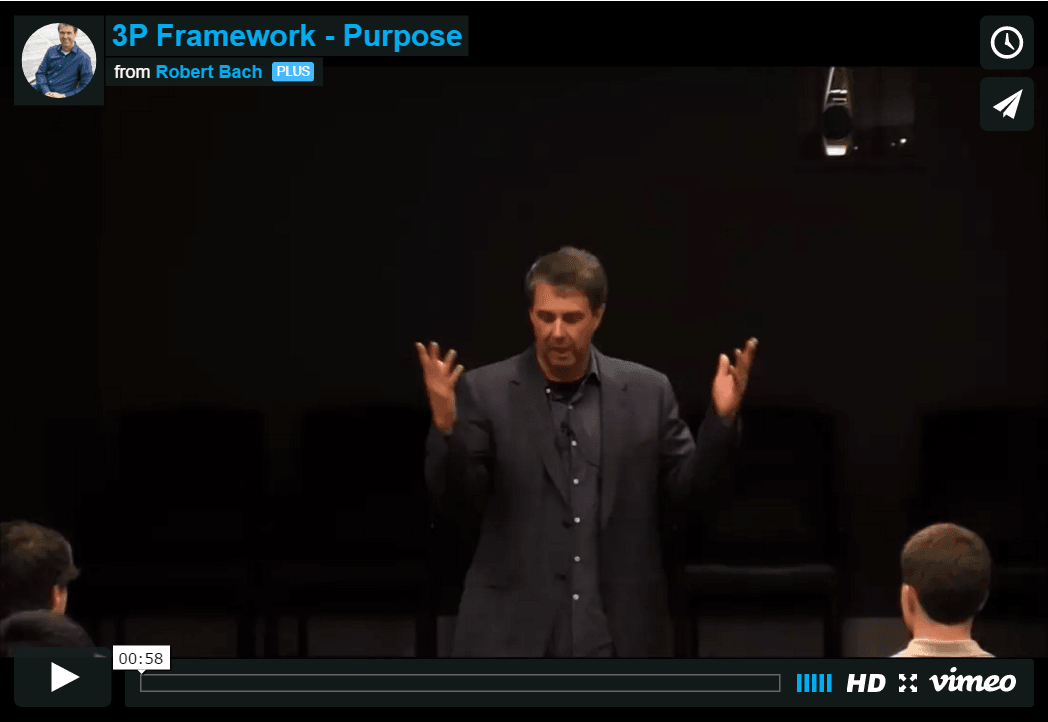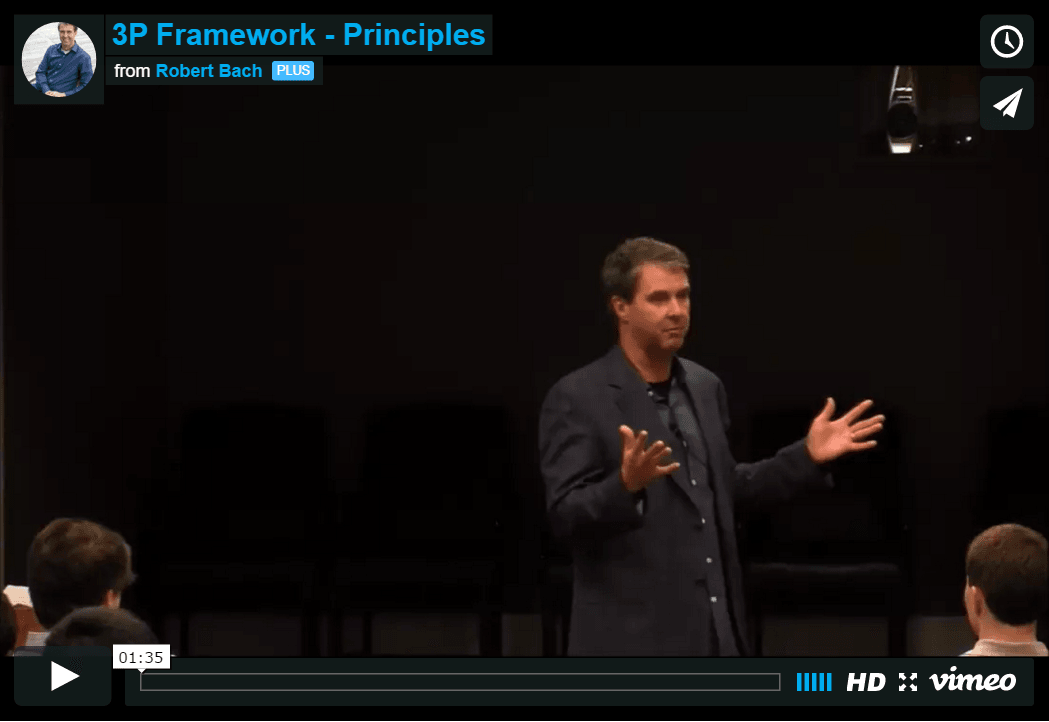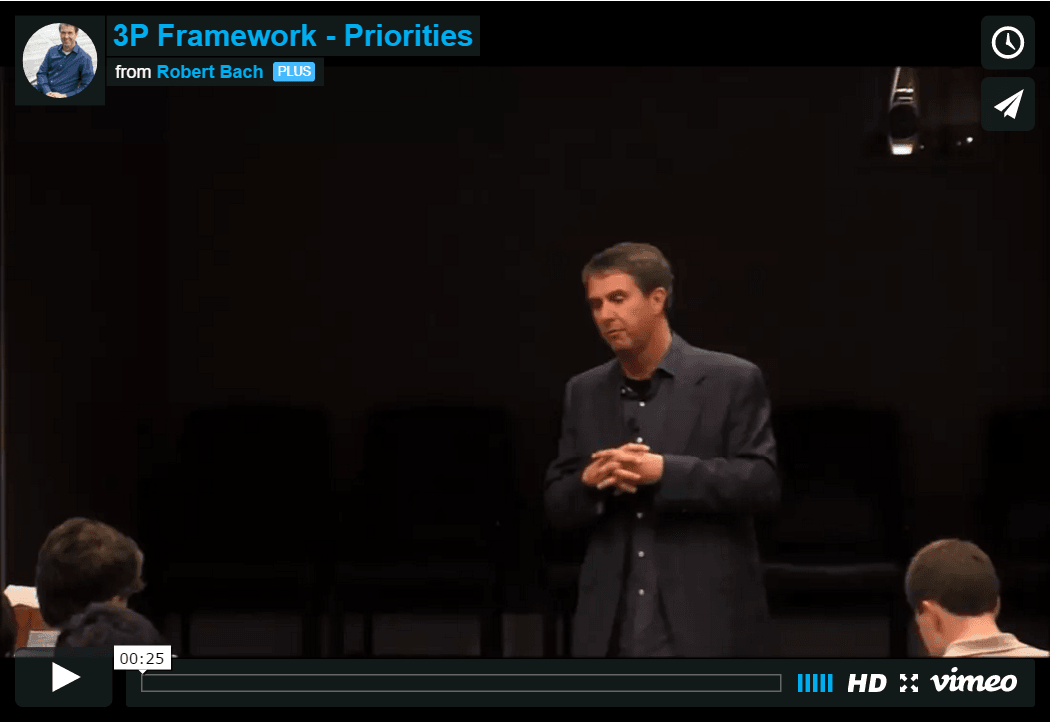3P Framework
A 3P Framework for Change
Robbie Bach is convinced that solving difficult problems requires a tremendous ability to simplify – getting caught up in the complexity of a situation reduces our ability to grab the low hanging fruit that can create great momentum. To that end, his book Xbox Revisited: A Game Plan for Corporate and Civic Renewal explores the 3P Strategy Framework which simplifies problems by focusing on the critical items of Purpose, Principles, and Priorities. These 3Ps, when combined with a short list of action items, help teams and individuals tackle almost any type of problem, but especially those that feel the most intractable or complex.
Bach’s 3P Framework is predicated on the Rule of 3s and 5s. Based on hundreds of presentations in front of large crowds or small groups, he knows that leaders can present at most three ideas if they want anyone to remember them. Shifting from communications to action, he extends the Rule of 3s with a corollary principle called the Rule of 5s: any list of strategies, tactics or programs must be limited to a total of 5 action items to ensure that resources are allocated appropriately to the projects that are most important.
According to Bach, a strong 3P Framework will summarize an organization’s strategy in a three page document that includes a crisp purpose statement, up to five principles, and a maximum of five priorities. In his words, each of these elements breaks down as follows:
Purpose: The Soul of the Matter
So what is Purpose and why is it so important? Every great, enduring strategy has a strong foundation – a touchstone that forms the core strategic direction for the group or organization. The purpose is a short, declarative statement that answers the questions “why do we exist as an organization?” and “what is it we are creating as a company?” As the architectural basis for the strategy, an organization’s purpose should remain constant for a long period of time, requiring great thought and foresight in creating the statement itself. It has to be aspirational enough to stand the test of time and yet realistic enough for people to believe it can be achieved. Although not immutable, purpose statements are meant to be long-lived directional beacons which change rarely and only then based on careful consideration.
Principles: The Beliefs that Matter
If purpose is the foundation for a strategy, principles are the frame of the house that create the shape and scope of the endeavor. Put another way, principles are the guard rails that ensure that organizations stay on course both strategically and morally, avoiding the inevitable distractions and marketplace noise that often mislead or confuse. Importantly, they enable employees to make real tradeoffs and decisions ensuring that the correct tactics are pursued and prioritized properly. These statements reveal up to five key beliefs about important strategy components such as customers, employees, and financial performance. They also codify certain elements of organizational culture that are important to the future success of the group. Principles are not specific programs or initiatives but rather are higher level concepts that endure for many years, in most cases changing only with a change in purpose.
Priorities: The Actions that Matter
With a solid foundation and support structure provided by purpose and principles, an organization or leader can establish a set of priorities that define the layout of the rest of the strategy building. Priorities define the five (and no more than five) key initiatives and investments that will drive an organization or individual over the next 1-3 years. These five priorities are those areas that MUST be resourced and managed successfully – while other tactical and operational programs coexist or support these priorities, any other major initiatives are either postponed or ignored altogether. The leadership team uses these priorities to create a specific annual plan with matching measurable deliverables and objectives. At the end of each year (or some other appropriate period), the team evaluates their progress against the priorities, makes any adjustments, and creates the plan for the coming period. In this way, the priorities portion of the strategic plan incorporates the flexibility necessary to stay current with competitive and market conditions as well as the performance of the team. It also forms the bridge from long-range strategic planning to annual operating budgets and plans.
THE REST OF THE STORY
A strong 3P Framework is an important element in a successful strategy, but other tools and activities are required to translate the framework into positive outcomes. In establishing priorities, additional techniques such as a SWOT analysis, Porter’s Five Forces model, a BCG quadrant analysis, and competitive simulations can all be quite useful. Additionally, the leadership team must do an excellent job communicating and rolling the strategy out to the broader team to ensure understanding and buy-in. At this phase, a strong three page summary of the 3P Framework is especially effective because it is long enough to capture the ideas but brief enough to ensure that it gets read.
As a team moves into execution mode, more detailed plans are required – something often referred to as a “30 page plan”. This document or presentation expands on the concepts in the three-pager to enable specific teams to operationalize the priorities that have been established. Ultimately, they will write much more detailed plans (the “300 page specification”) to ensure that all of the specifics line up with the original concepts and approaches.
Done properly, the 3P Framework and the corresponding 3-30-300 strategy process becomes part of an annual planning cycle that includes the following phases:
- Performance review relative to the previous year’s objectives.
- An update to the competitive and market situation and a validation of the established purpose and principles.
- Updates, if any are required, to the priorities.
- Creation of a new annual budget which includes financials, people resources, and programs.
- Communication phase including updates to the 3-30-300 plans to ensure team is current on the go-forward plan.
Over time, a team that can establish this rhythm dramatically increases its likelihood of success in the market.



